Vanilla Buttermilk Cake
Vanilla Buttermilk Cake is the old fashioned layer cake we all know and love. The cake has a moist, fine crumb and lovely vanilla flavor.
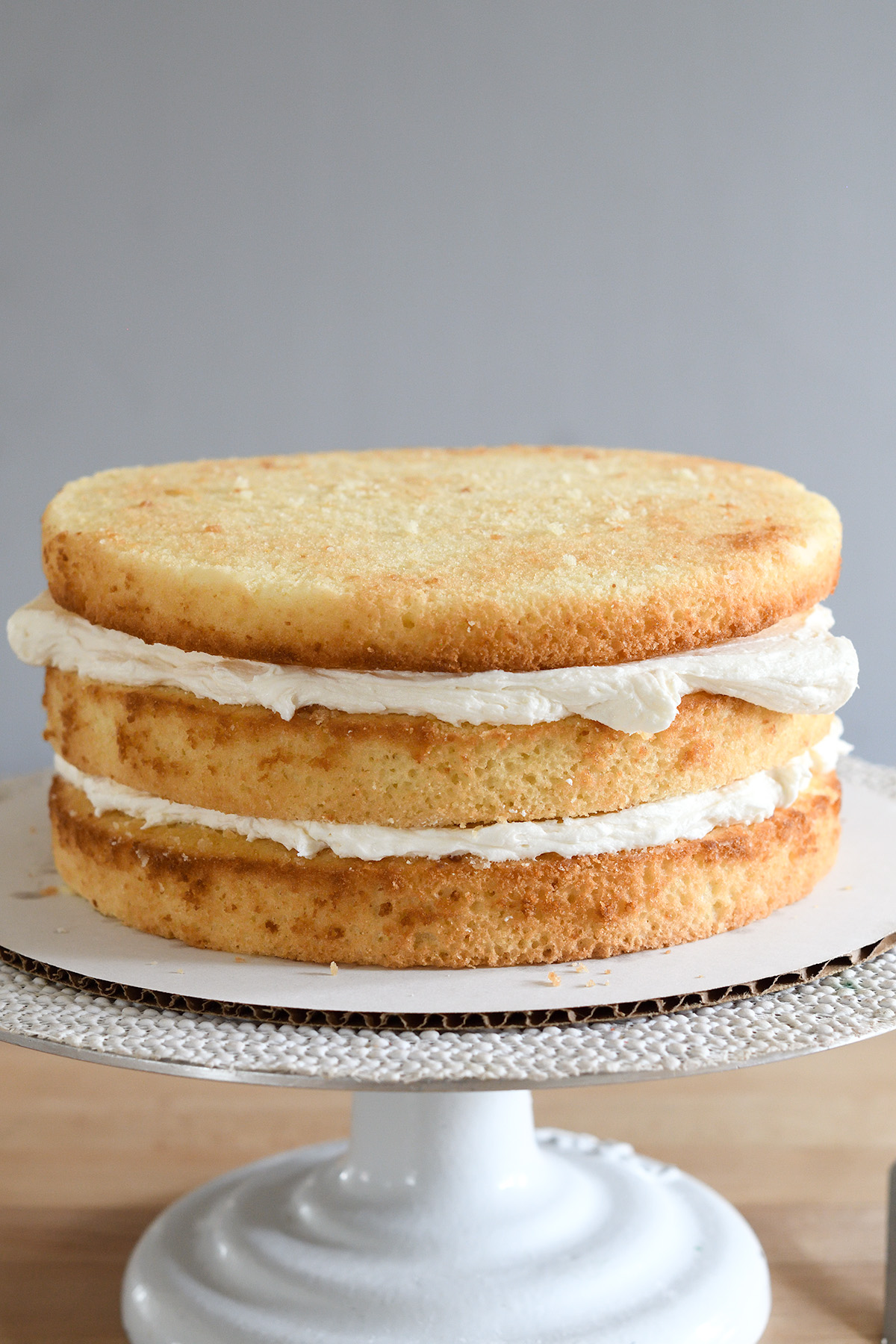
Why You’ll Love This Cake
You’ll love this cake because it has a very soft and moist crumb that is reminiscent of a cake made from a box-mix.
WHAT??? Why would I talk about cake mix on this everything-baked-from-scratch blog?
But wait, stay with me a minute. While I’m convinced that I can always spot a cake made from a mix because there is a certain artificial flavor that comes through, cake mixes do have one thing going for them.
Cakes made from a mix have a the super soft, very fine crumb that many, many people think of as the quintessential old fashioned layer cake. It’s the kind of cake that I grew up with, and maybe you did too.
But we don’t have to resort to using cake mix.
Why Vanilla Buttermilk Cake is so soft
- There are two important ingredients in this recipe that create the type of super-fine crumb you get from a cake mix — buttermilk and oil.
- Buttermilk is acidic and acidic ingredients tenderize the cake crumb.
- Oil stays liquid when chilled, so cakes made with oil are softer than cakes made with butter, especially if they have a perishable filling that needs to be stored in the fridge.
- The recipe starts by emulsifying the oil and eggs with the other wet ingredients. This forms lots and lots of tiny air bubbles in the batter, which are then expanded by the baking soda and powder. This produces a very fine and even crumb that melts in your mouth.
Ingredients
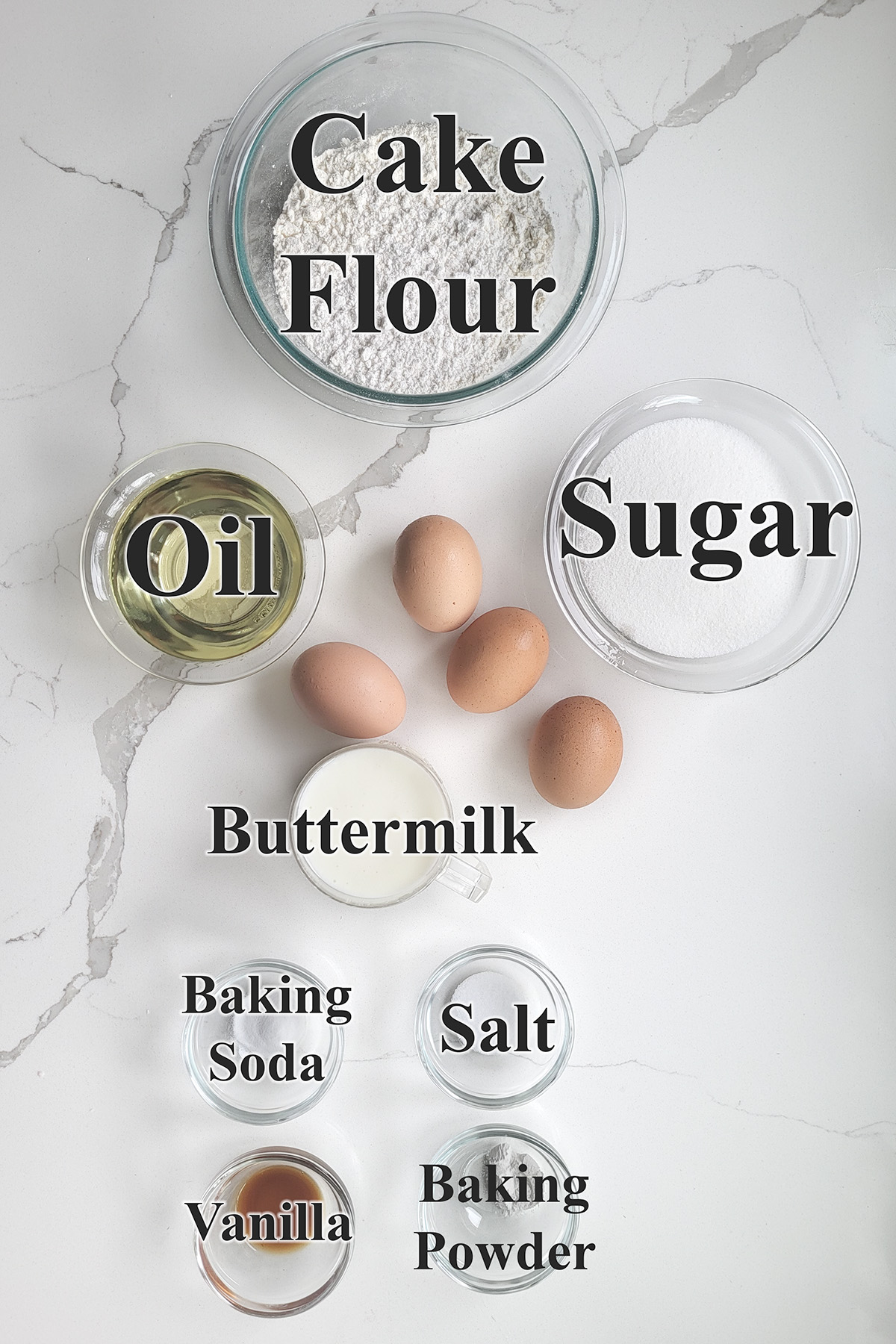
Ingredient Notes
- Cake Flour – I like to use bleached cake flour for the softest and most tender cake. Unbleached cake flour is also a good choice. As a last option, use all purpose flour to make the cake flour substitute in this post.
- Buttermilk – Acidic buttermilk makes the crumb on the cake tender and adds a beautiful flavor. For this cake I don’t recommend using a buttermilk substitute.
- Oil – Any neutral oil will work in this recipe. I use a basic vegetable oil.
Process Photos
Here’s what the recipe process looks like at each stage. Refer to the recipe card below for measurements and exact instructions.

- Sift the dry ingredients to remove lumps and to distribute the salt and leavening.
- In a large mixing bowl or the bowl of a stand mixer, use the paddle attachment to emulsify the eggs, oil and sugar.
- With the mixer running on low speed, add the sifted dry ingredients and mix just until combined.
- Divide the batter between three 8 inch pans. If you only have 2 pans, put 1/3 of the batter in one pan and 2/3 of the batter in the other. Torte the larger cake after baking.
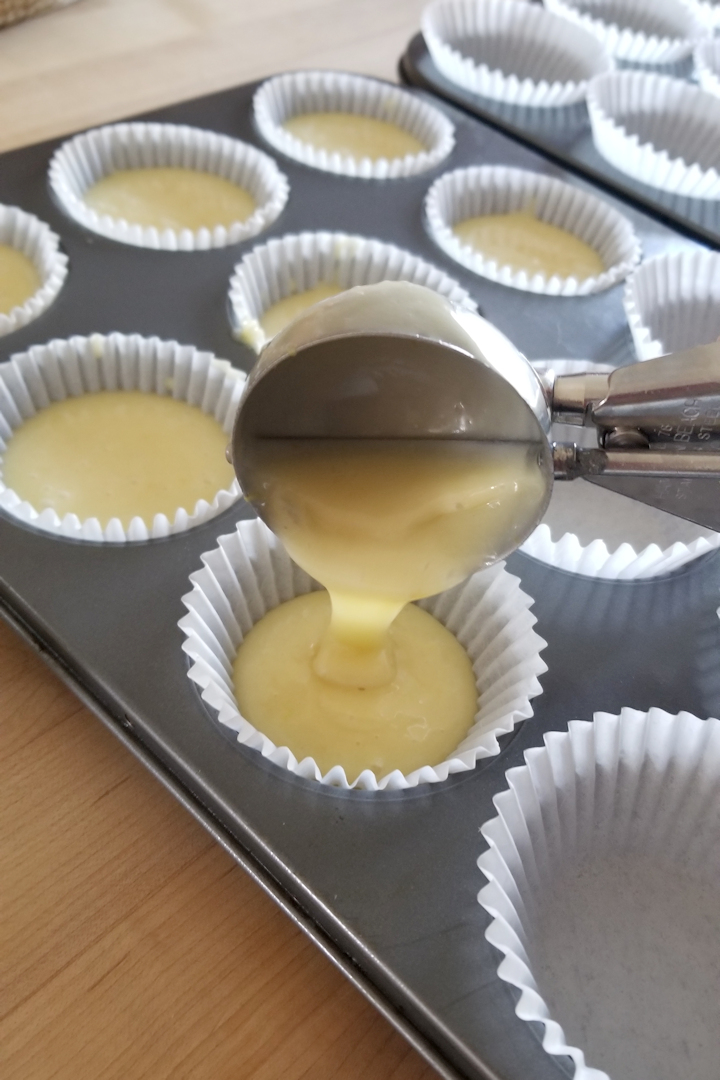
- The recipe can also make 18 vanilla cupcakes.
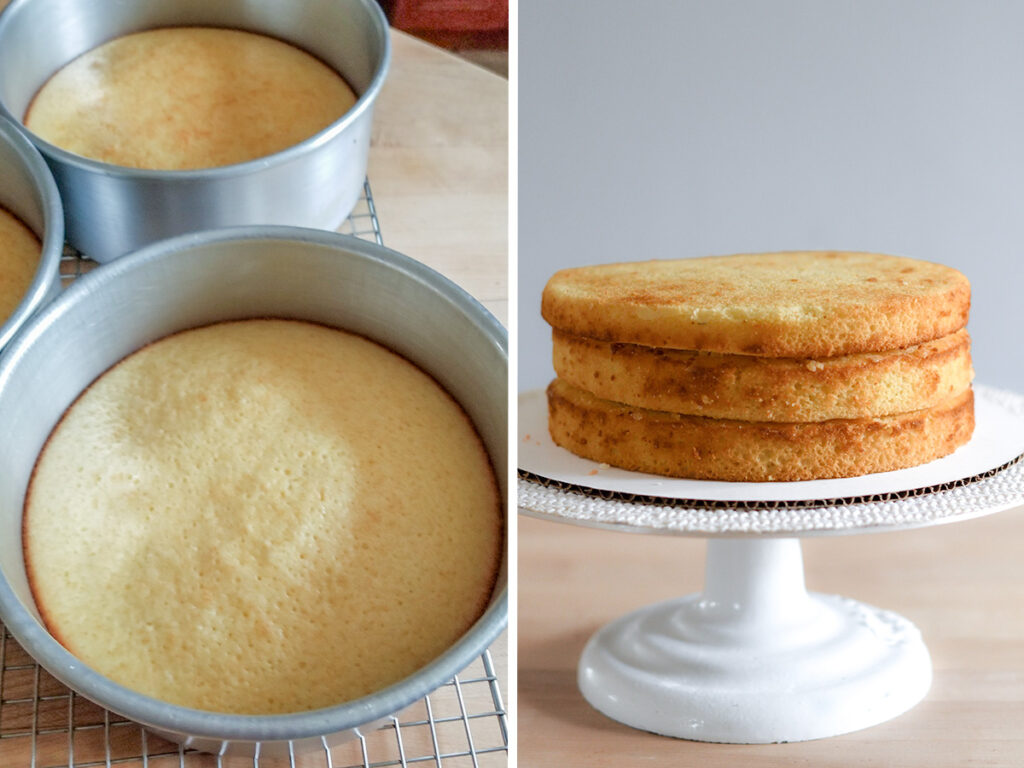
- Bake until the center of the cake springs back when lightly pressed. Cool in the pan for 10 minutes then turn out onto a wire rack to cool completely.
- For the prettiest cake slices, I always trim the brown crust from the layers before filling and icing the cake.
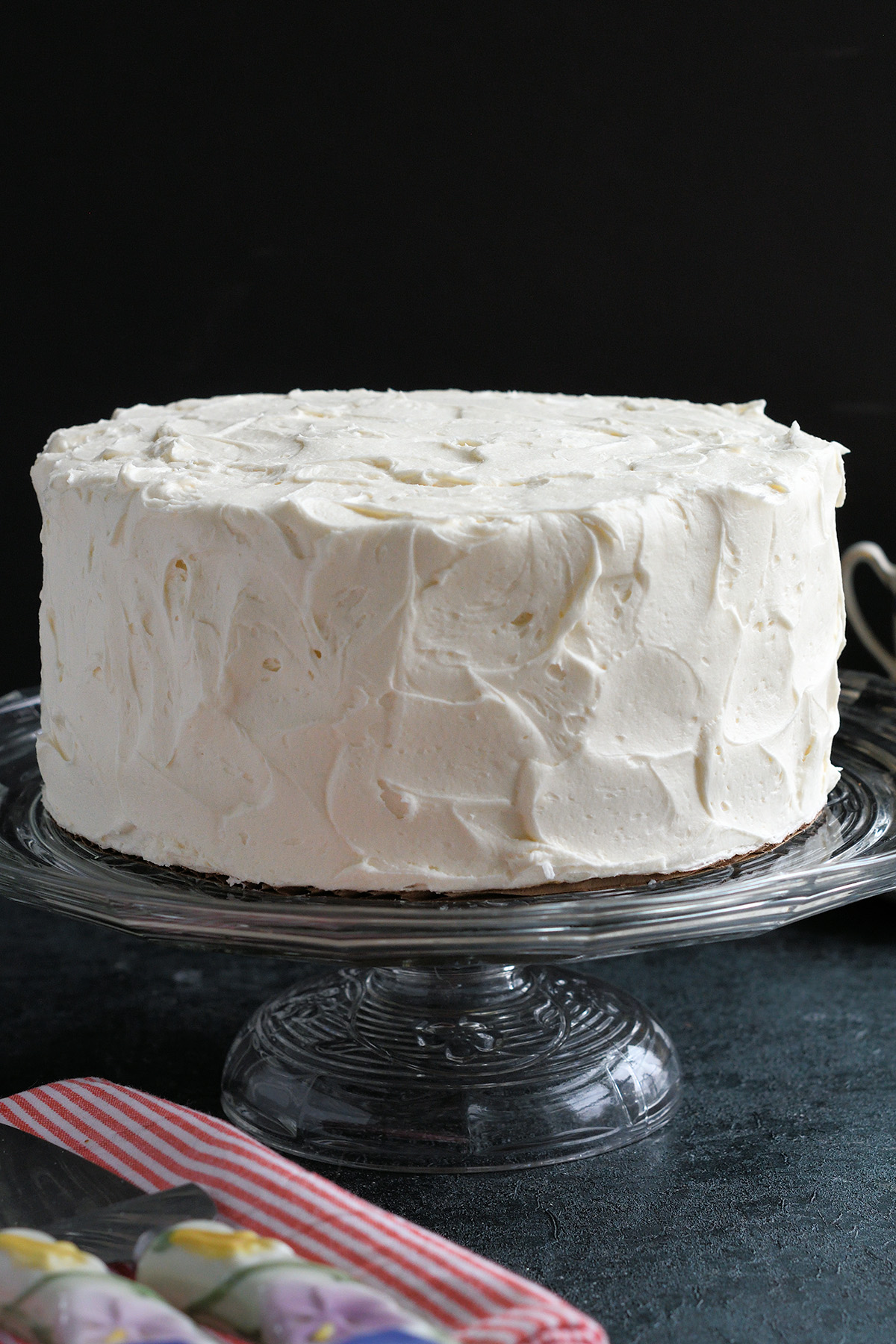
For a real old-fashioned slice of heaven, fill and frost this cake with simple-to-make American Buttercream. If you prefer your frosting less sweet, try Italian Meringue Buttercream or Ermine Frosting.
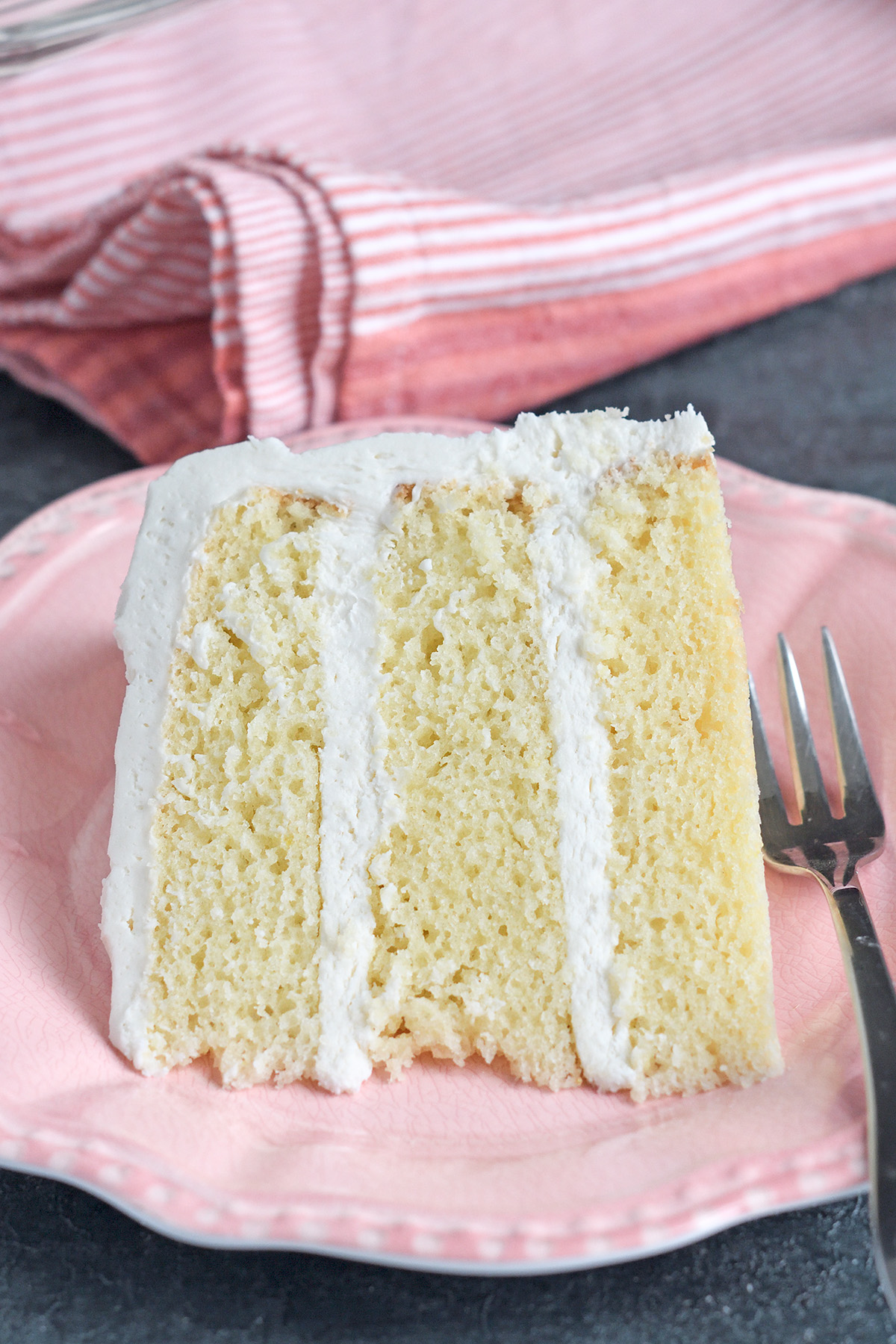
If you love this recipe as much as I do, I’d really appreciate a star rating and a quick comment. Ratings and comments help my recipes show in search results. Thanks!
Vanilla Buttermilk Cake Recipe
Ingredients
- 11 ¼ oz cake flour (2 ½ cups, see note)
- 1 teaspoon baking powder
- ½ teaspoon table salt
- ¼ teaspoon baking soda
- 8 oz vegetable oil (1 cup)
- 4 large eggs
- 8 oz buttermilk (1 cup)
- 1 tablespoon vanilla extract
- 16 oz granulated sugar (2 cups)
Instructions
- Preheat the oven to 350 °F. Line the bottom of three 8"x3" round cake pans with parchment paper, or butter and flour the bottom of the pans (don't butter/flour the sides). (see note)
- Sift 11 ¼ oz cake flour with 1 teaspoon baking powder, ½ teaspoon table saltand ¼ teaspoon baking soda and set aside.
- Combine 8 oz vegetable oil, 4 large eggs, 8 oz buttermilk, 1 tablespoon vanilla extract and 16 oz granulated sugar in a mixer bowl. Mix on medium speed to combine the ingredients, continue mixing for 2-3 minutes to emulsify the ingredients. With the mixer running on low, add the flour mixture.
- Divide the batter evenly between the pans. Bake until the top springs back when lightly pressed or a toothpick inserted in the middle of the cake comes out clean, about 30 minutes.
- Cool in the pan for 10 minutes before turning out onto a cooling rack.
- Cool completely before filling and icing.
Would you like to save this recipe?
As an Amazon Associate and member of other affiliate programs, I earn from qualifying purchases.

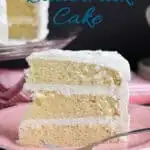

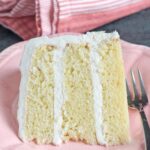
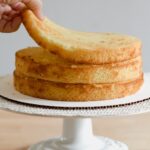

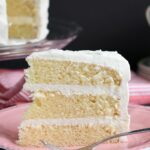
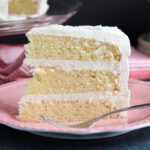





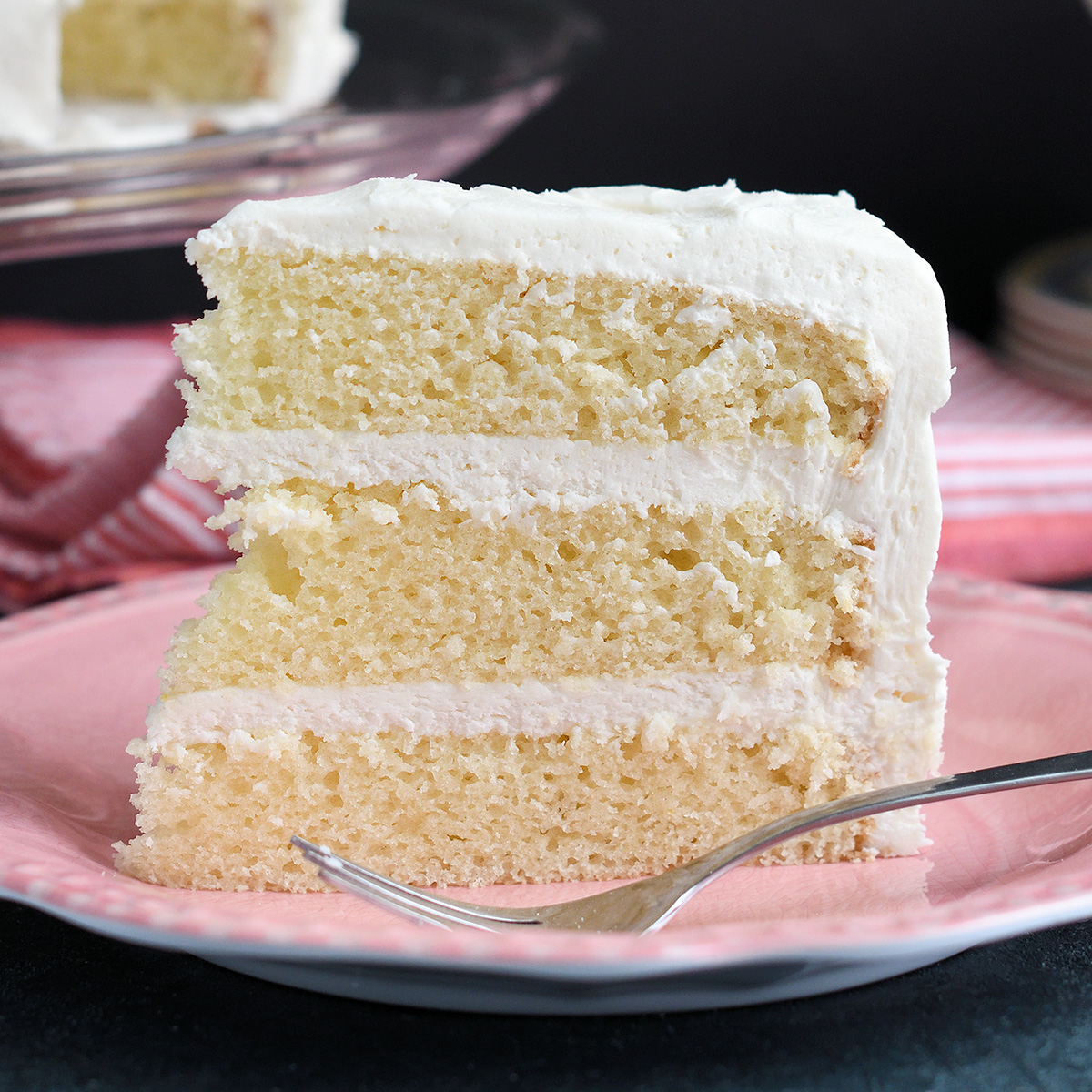
Can I add Coco powder to this recipe to make it chocolate?
Here’s a chocolate version of this recipe.
Is there a mistake with this recipe?
How can 318.93g be 2.5 cups flour when 453.49g is only 2 cups of sugar. Please clarify, thanks
No, there is no mistake. Cake flour weighs 4.5 oz per cup while sugar weighs 8 oz per cup.
Thank you for confirming that – I had no idea!
You’re welcome. You can learn more about measuring baking ingredients here.